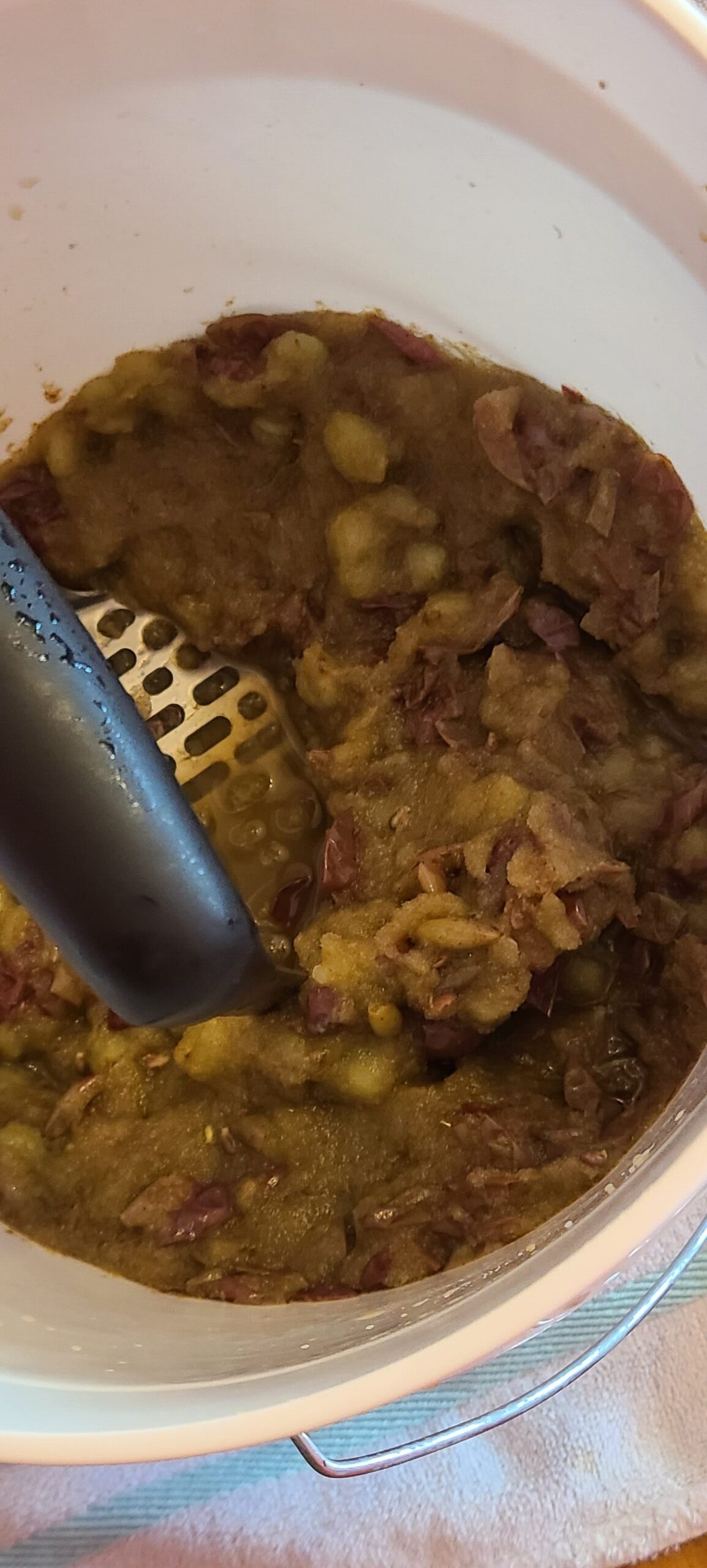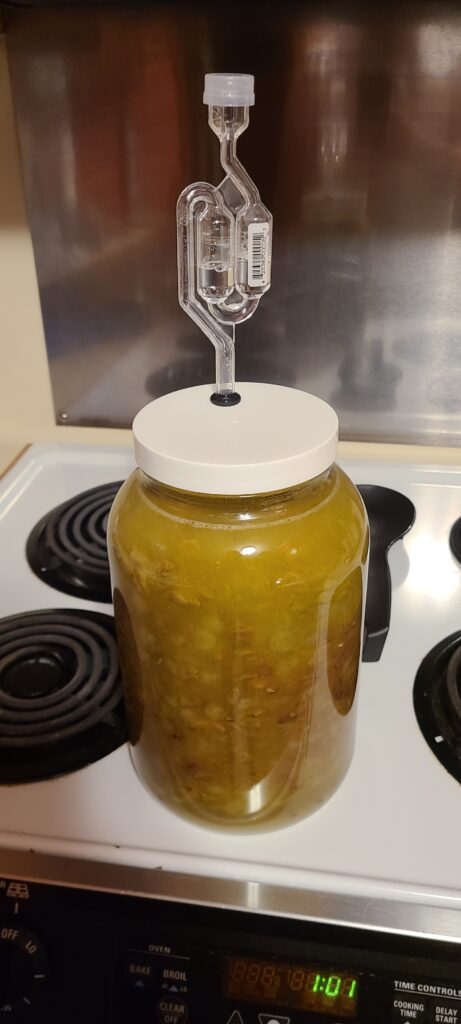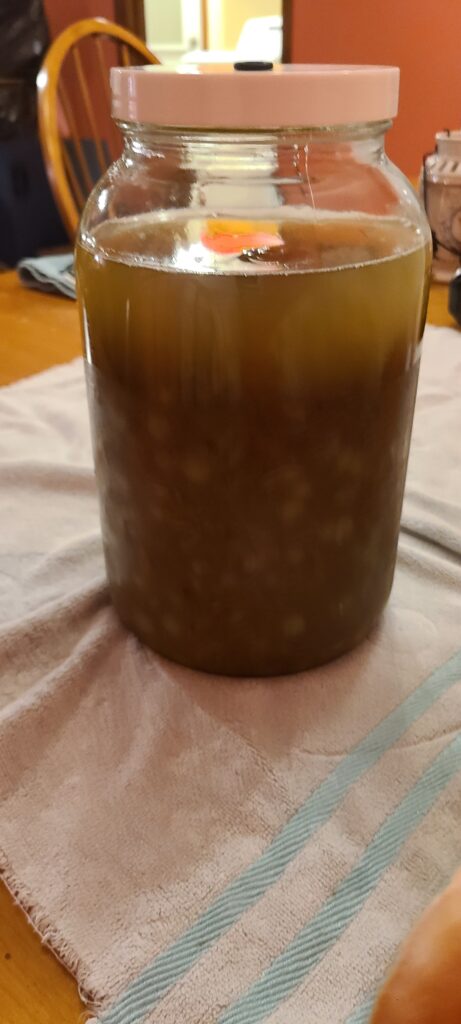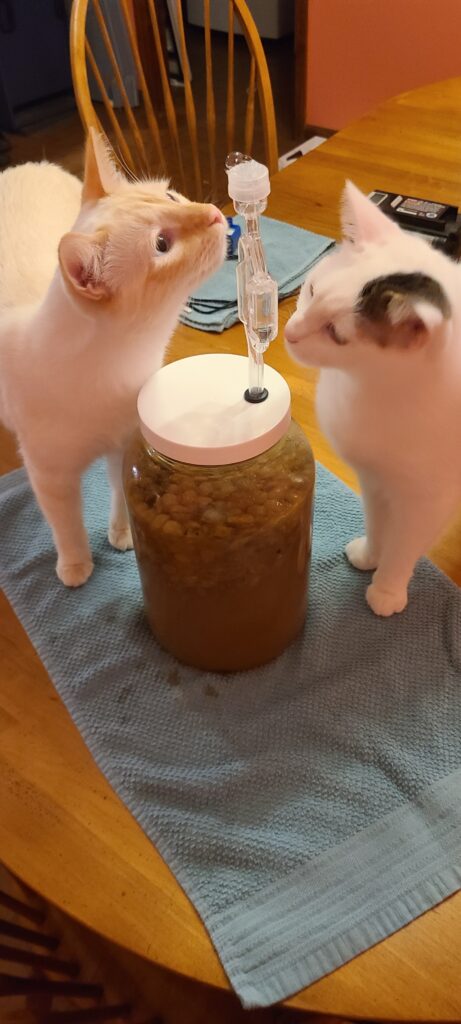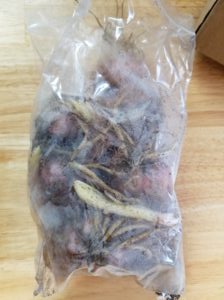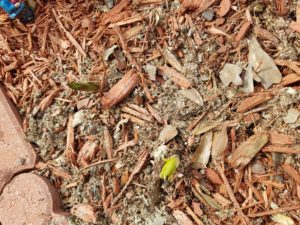Somehow, I managed to grow some grapes in my backyard and rather than leave them to the birds and the mold, I decided to attempt brewing some wine. What kind of wine?
Well, that depends on the grapes you’re using and the brewing method. I am by no means an expert or even a novice on any of this. I’m just sticking my toe into the deepest of oceans because I can. There are also a staggering number of different opinions and takes. I guess that should be expected for something like this.
My path began over a year ago when I wanted to add a little panache to my backyard garden. I had four beds in a square pattern and used some inexpensive 1×1 and 0.5×1 wood to build a little trestle between them adorned with a wind chime and some bricks. I did this late in the winter and was looking for some plant I could stick at each of the four corners that would grow up the trestle.
My bright idea was to use grape vines. Afterall, Home Depot had them for sale at the front of the store. I got two red and two green (I think) and planted them. Initially, the vines grew relatively well. I had to time them up the trestle to help them reach the top where they could really cling. What I learned pretty quicky was grape vines don’t care much for making corners. If you bend a grape vine too far, it tends to snap.
I was also discouraged by the total lack of growth that first season and, well, the lack of grapes. The vines survived a pretty strong multi-day freeze and I kind of assumed I lost at least two of the vines. Later that spring, I dug those “dead” vines up and planted some Peggy Martin rose bushes. Those grow like weeds, but haven’t bloomed as often or as much as I would have hoped so far.
The remaining grapes vines, though, went wild. And before I knew it I had tiny, baby grapes in little bushels all over my trestle. I watched them grow in size for weeks, wondering the whole time what I would do with them. After trying a ripe one, which was really sweet, I decided to give wine making a shot.
Getting the basic equipment for fermentation wasn’t especially expensive and is reusable for brewing other types of drinks. The local store, LA Homebrew, had everything I needed to get started. A couple of 1-gallon carboys, some yeast, a siphon, an airlock, a little Star San, and some potassium metabisulfite powder and I was on my way or so I thought.
When I told the local gardener I was growing some grapes to use to make some wine, he laughed at me. Louisiana is not a great place to grow grapes. The biggest reason is mold. Grapes easily succumb to powdered mold in the high humidity. My big initial problem was birds eating my grapes, which was why I asked for advice in the first place.
I couldn’t do much about the mold, except pick the best grapes as soon as I could. As far as the birds, I used a combination of bird netting and a fake owl (F—ing $30 for a plastic owl). Those solutions were minimal effective but better than nothing. After several grape picking runs (I was picking the grapes one at a time to save the best from birds and rot), I managed to collect about 5.5 lbs. of mostly good grapes. That should be enough to make one gallon of wine, but it really depends on where you go for advice or what recipe you’re attempting to follow.
At the advice of the local homebrew store, I froze my grapes as I picked them to preserve them and to hopefully wring more juice out of them. Once I felt like I exhausted my vines, I let my grapes thaw in the fridge and then began the sterilization process.
The process is relatively simple, from what I’ve done. Mix an ounce of the Star San solution into 5 gallons of water and then rinse everything you want to sanitize in that. The solutions will hold good for a couple of weeks. I then dumped my cold grapes into a cleaned and sanitized 2-gallon bucket, put on some nitrite gloves, and then went to mashing with a potato masher.
I worked those grapes for about half an hour and realized my fingers were going numbers from cold and I was really only producing sludge. I let the concoction warm up to room temperature and then went back at it to better results. I had a lot more juice.
I carefully poured the entire slurry into a clean 1-gallon carboy. Juice, grapes, and whatever little stem pieces remained went in. I wasn’t sure about how much water to add, so I poured in 4 cups of water filtered from my fridge.
I wasn’t clear on the next part, so I added the sulfite powder and let it work on sterilizing the grapes, juice, and water for 24 hours. I needed to let it go that long so the powder wouldn’t kill my yeast when I was ready to add it. The next night, I added 2 cups of granulated sugar, thinking that would be plenty. Then I poured in my yeast packet after priming it with some carefully warmed water.
This is when I made the first mistake I’m aware of. I attempted to use my hydrometer to take a measurement of the initial specific gravity. You need this reading to compare to the final reading of your brew to determine the alcohol content. I tried to take it, but the grapes in my mix wouldn’t let the hydrometer float freely, so I let it go.
I then sealed the carboy with my little S-shaped airlock and stored it in the top of my hall closet where it would stay a little warmer than the rest of my house. The fermentation began pretty rapidly. And I realized I had made another mistake. I didn’t leave enough headroom in the carboy. I had to spoon out clumps of my grapes to leave enough room so fermenting grape juice wouldn’t bubble it’s way out of my air lock.
In retrospect, I could have put on some gloves and squeezed those grapes as much as possible to get the juice out of them instead of just throwing them away, but I chalked it up to another lesson.
I also realized, after doing some reading online, that I only added about half the sugar I needed. So I shoveled in two more cups of sugar and stirred the mixture well. Since beginning a few days ago, I’ve been stirring the mixture twice a day and smelling it to make sure there’s no sulfur dioxide (bad egg smell). The mixture began with a super sweet smell and not has a definitive, though bitter wine smell. I probably need to put the brew in a cooler spot and aerate it a little more.
I hope to move to the second stage of fermentation in the next couple of days. I’ll strain the juice through a fine mesh bag and squeeze the juice out of the grapes. I’ll then store that in a clean carboy and let the remaining yeast starve and suffocate itself to death while the dead yeast and sediment falls to the bottom.
There will be more to the process past that, but if everything works, I could have one or two bottles ready by the end of the year. Ideally, it would be better to bulk age them a little longer than that, but the appeal of Christmas wine seems too much to pass up.
As far as what type of wine am I brewing? I hoped to have some form of red or grape/muscadine wine, but it’s looking more and more like I’m brewing up an amber wine. I’ve actually never tried that before, so I’m looking forward to the final result.


